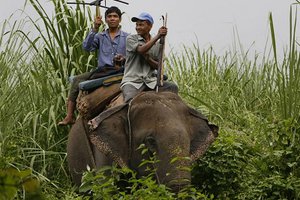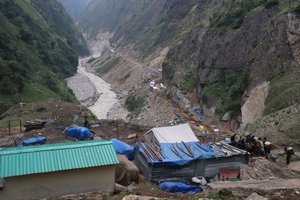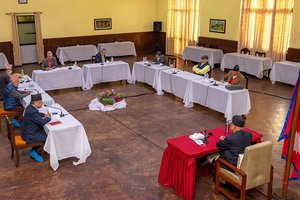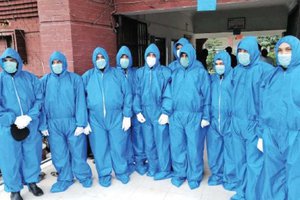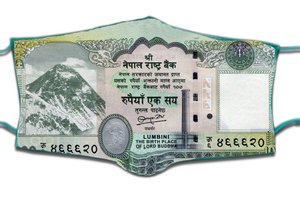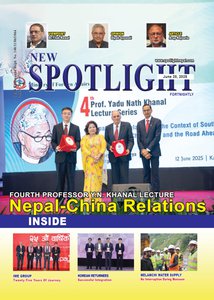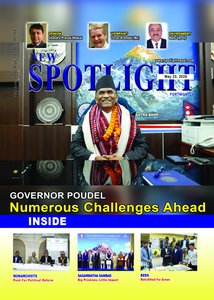Opinion
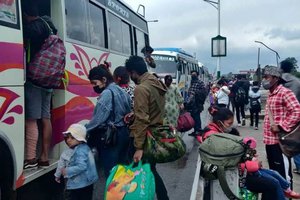
Covid-19 In Nepal: Where Are We After 9 Weeks Of Lockdown?
Separate estimates point to 95 percent job losses in the informal daily-wage job markets in the tourism, construction, manufacturing, transportation, and wholesale and retail sectors where 4.4 million Nepalis find work.
By Sagar Prasai May 19, 2020

Lockdown To Locked In
Of course, there is no copyright in names and I remember reading many years ago that there were seventeen Berlins in the US. In fact, there is Kathmandu in Maine too! It seems that people arriving in new lands hanker or long for their previous habitats. Some referred to these new places with the prefix of new.
By Hemang Dixit May 19, 2020
Learn To Live With Corona
Resource-poor countries in the world have to act smart in accessing bilateral and multilateral sources of help and assistance so that their economies do not take a plunge into an unfathomable mess of misery\poverty recovery from which could take years of hard work and sacrifice.
By Dr. Tilak Rawal May 18, 2020
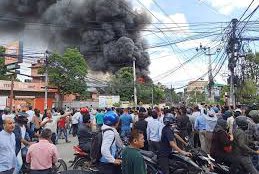
Growing Fire Incidents Wreaking Heavy Losses in Nepal
To reduce the impacts of fire in Nepal, Nepal needs to build the capacity of fire stations and fire fighters in fire preparedness and response mechanisms, establish operation and maintenance fund, enforce policy provisions, and mainstream good practices and learning in local government acts, regulations and strategies.
By Dr. Dhruba Gautam May 14, 2020
Rise Of Liberal Socialism To Reshape The Coronomics
Lockdowns and economic recession are expected to lead to a major loss of income among the working poor. It will have hard-hit even harder to the hardcore poor like daily wage-earner, slum-dwellers, disables, elders, refugees and migrant workers.
By Dr. Man Bahadur Bk May 07, 2020

Preliminary Part Of Padma Shamsher's Government Of Nepal Act, 1948
Article 3 of the Act gave validity, and therefore continuity, to the rule of succession not only to the throne of His Majesty the King of Nepal addressed as Shree 5, but also to His Highness the Rana Maharaja addressed as Shree 3. The Act did not reproduce the relevant rules in the Act, but only referred to them clearly.
By Dr. Bipin Adhikari May 04, 2020
As Loktantra Sizzles and Fizzles
What will happen next? Will Oli and Bidya Bhandari resign? Will Oli fight on even to the extent of splitting off his faction of the never united party? Or will he dissolve the parliament, call for fresh elections that cannot be held anytime soon and impose president's rule in the meanwhile?
By Dipak Gyawali Apr 29, 2020
Strengthening Community-based Disaster Management Institution To Tackle COVID – 19 And Local Disasters
The increase in occurrence and frequency of both natural and non-natural disasters has become an everyday reality to the majority of Nepalese, ever so much for the people at the low economic means.
By Dr. Dilli Prasad Poudel Rachana Upadhyaya Dr. Netra Prasad Timsina Apr 26, 2020
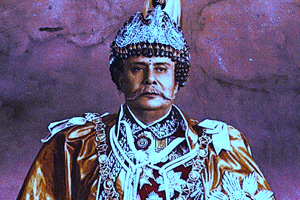
State Of Nepal’s Economy And Development Prior To The Introduction Of Padma Shamsher's Constitution
An isolated agrarian society, Nepal has always been a home to a diversity of animals, forests, medicinal resources, pastures, and a source of various minerals and precious stones. Several locations in the Himalayas, the hills and the plains have historically had religious significance for Hindus, Buddhists and Kirats, attracting religious tourists from Nepal’s neighboring countries. These resources have had economic implications for the country. According to the 1941 census, the population of Nepal had already reached 6,283,649, although very little had changed in terms of Nepal’s economic state. Economically, Nepal was a feudal country until 1950-51, after which the predominant part of the national economy began moving towards subsistence agriculture. This article is aimed at reviewing the state of Nepal's economy and development prior to the introduction of the Constitution of Prime Minister Padma Shamsher in 1948.
By Dr. Bipin Adhikari Apr 20, 2020
Latest Updates
- Journalist Pathak ordered to be released on bail of Rs 25,000
- 1 day, 1 hour ago
- Tik Talker Rama Basnet released on bail of Rs 30,000
- 1 week, 1 day ago
- PM Oli Urges Evey to Make Yoga a Daily Life
- 1 week, 6 days ago
- Neal’s First Flyover Construction Completed
- 2 weeks, 1 day ago
- Court Orders Two Important Order in Favor of Press Freedom
- 2 weeks, 1 day ago
- Ministry of Foreign Affairs issued A Travel Advisory for the Middle East
- 2 weeks, 2 days ago
- Government Has Started The Implemenation of Resolution of Sagarmatha Sambad: Minister Shahi
- 2 weeks, 3 days ago
- Journalist Pathak files writ petition in High Court against arrest warrant
- 2 weeks, 4 days ago
- Parliament was run in a tyrannical manner: Gyanendra Shahi
- 2 weeks, 5 days ago
- Nagrik-Arju Dispute: She Says - 'I Spoke With Shobha Gyawali, I Am Surprised To See Reaction That I threatened'
- 3 weeks ago
